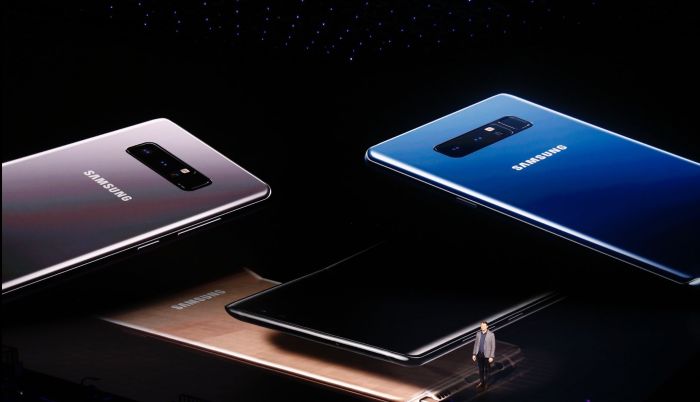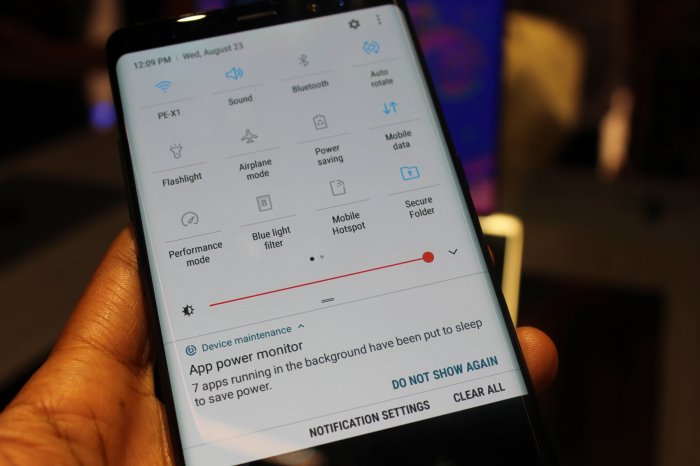Samsung Note 8 Specification A Detailed Overview
Samsung Galaxy Note 8: A Deep Dive into its Specifications
Samsung note 8 specification – The Samsung Galaxy Note 8, released in 2017, marked a significant comeback for the Note series following the Note 7 recall. Its launch was met with a mix of anticipation and cautious optimism. Samsung focused heavily on addressing the battery safety concerns while highlighting the device’s advanced features and refined design. The Note 8 aimed to recapture the trust of consumers and solidify its position as a premium flagship.
Display Specifications
The Note 8 boasted a stunning 6.3-inch Super AMOLED display with a Quad HD+ (2960 x 1440) resolution. This resulted in a sharp, vibrant, and incredibly detailed viewing experience. The screen’s color accuracy was exceptional, showcasing rich and lifelike colors, while its brightness ensured excellent visibility even under direct sunlight. Compared to other flagships of the time, such as the iPhone 8 Plus and Google Pixel 2 XL, the Note 8’s display often received praise for its superior color reproduction and overall visual fidelity.
Processor and Performance
Depending on the region, the Note 8 utilized either the Qualcomm Snapdragon 835 or the Samsung Exynos 8895 octa-core processor. Both variants were paired with 6GB of RAM and offered internal storage options of 64GB or 128GB, expandable via microSD card. The Note 8 delivered smooth and responsive performance even under heavy multitasking and demanding gaming scenarios.
| Device | Benchmark Score (Antutu) | RAM | Storage |
|---|---|---|---|
| Samsung Galaxy Note 8 (Snapdragon) | ~180,000 | 6GB | 64GB/128GB |
| Samsung Galaxy Note 8 (Exynos) | ~170,000 | 6GB | 64GB/128GB |
| Google Pixel 2 XL | ~160,000 | 4GB | 64GB/128GB |
| iPhone 8 Plus | ~190,000 | 3GB | 64GB/256GB |
Camera Features

Source: mensxp.com
The Note 8 featured a dual-rear camera system, a significant upgrade from its predecessor. Both lenses were 12MP, with one offering a wide-angle lens (f/1.7 aperture) and the other a telephoto lens (f/2.4 aperture) with 2x optical zoom. The front-facing camera was an 8MP sensor (f/1.7 aperture). The camera system included features like optical image stabilization (OIS) on both rear lenses, resulting in sharper images and improved low-light performance.
The image processing capabilities were advanced, producing detailed and well-balanced images across various shooting scenarios, including portraits, landscapes, and low-light conditions.
Battery and Charging, Samsung note 8 specification
The Note 8 included a 3300mAh battery, a capacity carefully chosen following the Note 7’s issues. While not the largest battery on the market at the time, it generally provided a full day of use for most users under moderate usage. The phone supported fast charging via USB-C and wireless charging, though the charging speeds were not as rapid as some competing devices released later.
Software and Features
The Note 8 launched with Android 7.1.1 Nougat and was later updated to Android 9 Pie. The standout feature remained the S Pen stylus, offering enhanced note-taking capabilities, screen-off memo functionality, and creative drawing tools.
The Samsung Note 8, with its powerful processor and stunning display, remains a popular choice. However, for those seeking a more budget-friendly 5G option, the specifications of the Samsung Galaxy A15 5G are worth considering; you can find detailed information on its features at samsung galaxy a15 5g specification. Ultimately, the best choice depends on individual needs and budget, but comparing the Note 8’s higher-end specs to the A15 5G’s more accessible features provides a useful contrast.
- Samsung Notes: For note-taking and sketching.
- Samsung Gallery: For photo and video management.
- Samsung Pay: For mobile payments.
- Microsoft Office Suite: For productivity applications.
Design and Build Quality
The Note 8 featured a sleek, all-glass design with a metal frame. Its dimensions were 6.3 inches diagonally, 162.5 x 74.8 x 8.6 mm, and weighed approximately 195 grams. The phone’s design was refined and elegant, with a comfortable feel in the hand despite its size. The build quality was premium, exuding durability and a sense of luxury.
Connectivity and Sensors

Source: ibtimes.com
The Note 8 offered a comprehensive suite of connectivity options, including Wi-Fi 802.11 a/b/g/n/ac, Bluetooth 5.0, NFC, and USB-C. The device included a variety of sensors, including an accelerometer, gyroscope, proximity sensor, ambient light sensor, barometer, and a heart rate sensor.
Comparison to other Note Series Devices
The Note 8, while a significant device in its own right, pales in comparison to its successors in terms of processing power and camera capabilities. The Note 9 and Note 10 series phones brought significant advancements in these areas, along with improvements in battery life and screen technology.
| Feature | Note 8 | Note 9 | Note 10 |
|---|---|---|---|
| Processor | Snapdragon 835/Exynos 8895 | Snapdragon 845/Exynos 9810 | Snapdragon 855/Exynos 9825 |
| RAM | 6GB | 6GB/8GB | 8GB/12GB |
| Main Camera | Dual 12MP | Dual 12MP | Triple 12MP+16MP+12MP |
| Battery | 3300mAh | 4000mAh | 3500mAh (Note 10)/4300mAh (Note 10+) |
Common Queries: Samsung Note 8 Specification
Did the Samsung Note 8 have any significant design changes compared to the Note 5?
Yes, the Note 8 featured a larger, edge-to-edge Infinity Display, a dual-camera system, and a refined overall design compared to the Note 5’s flatter display and single-lens camera.
Was the Note 8 waterproof?
Yes, the Note 8 had an IP68 rating for dust and water resistance.
What wireless charging standard did the Note 8 support?
The Note 8 supported Qi wireless charging.
Did the Note 8 have expandable storage?
No, the Note 8 did not offer expandable storage via microSD card.





















